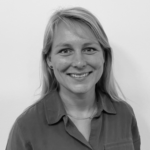AQUADA-GO
Challenge:
Current wind turbine blade inspection methods use primarily rope and/or basket access techniques, ground-based cameras, or flying drones. These methods are predominantly based on optical images at human visual frequencies. Only the images of damage and features on the surface such as erosion, dirt, and surface cracks are identified. However, the critical damage often occurs underneath the blade surface and they are hidden from view, especially from afar. More importantly, wind turbine operation has to be stopped during the inspection, incurring additional costs due to downtime and lost revenue.
Solution:
The AQUADA-GO project develops a methodology for automated, noncontact, near real-time blade damage detection and risk evaluation in a single step using thermography and computer vision. This occurs without stopping the normal operation of wind turbines. The project will take the AQUADA technology developed in the laboratory of DTU Wind Energy and apply it to operational offshore wind turbines.
The project will offer an innovative, market-ready solution to disrupt the current labor-intensive and multi-step blade inspection paradigm. AQUADA-GO will develop and demonstrate both software implementation and hardware integration in an all-in-one drone platform for offshore applications. A full-scale prototype system will be tested and demonstrated on RWE-owned offshore wind farms together with the commercial partner Quali Drone and the research partner DTU Wind Energy.
Effect:
The project aims to reduce blade inspection cost by at least 50% and offer a significant contribution to drive down the Levelized cost of energy (LCOE) of wind power by 2-3% over 25-30 years’ project lifetime of offshore wind farms compared to the solutions currently available on the market.
The AQUADA-GO technology is expected to reduce CO2 emission by 30-50% per turbine inspection compared to the existing commercially available solutions. In total, the AQUADA-GO project is estimated to increase the combined annual turnover of the two involved companies by 125 to 230 million DKK and create 33 to 55 full-time new jobs in 3 to 5 years after project completion.
Problem owner:
Problem solvers:
DTU: Danmarks Tekniske Universitet
Media
New drone technology uses Artificial Intelligence to examine offshore wind turbine blades
Project timeline


PHASE 1: Conceptualization
PHASE 2: Development and Testing
PHASE 3: Demonstration and Validation
PHASE 4: Commercialization
Financed by

Facts
Start: January 2023
End: December 2025
Total budget: 17.796.010 mio. DKK
EUDP funds: 7.470.376 mio. DKK
Contact person

Marie Vedel Lauridsen
Project Manager
Tlf: +45 2265 4600
E-mail